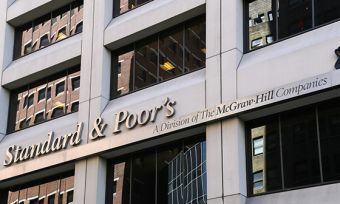The major credit rating agency said increasing levels of household debt had, in turn, left the banks increasingly exposed to the potentially disastrous impact of a property market downturn or crash.
“In Moody’s view, elevated risks within the household sector heighten the sensitivity of Australian banks’ credit profiles to an adverse shock, notwithstanding improvements in their capital and liquidity in recent years,” the agency said in a statement.
“Latent risks in the housing market have been rising in recent years, because significant house price appreciation in the core housing markets of Sydney and Melbourne has led to very high and rising household indebtedness.
“Whilst mortgage affordability for most borrowers remains good at current interest rates, the reduction in the savings rate, the rise in household leverage, and the rising prevalence of interest-only and investment loans are all indicators of rising risks.”
Last month, S&P downgraded the ratings of 23 Australian financial institutions, but left the big four banks’ ratings intact under the presumption that they would be bailed out by the government in a severe downturn.
Which institutions were affected, and to what extent?
The banks and their affiliates hit by Moody’s latest downgrades are:
- ANZ
- CBA
- NAB
- Westpac
- Bendigo and Adelaide Bank
- Heritage Bank
- Members Equity Bank
- Newcastle Permanent Building Society
- QT Mutual Bank
- Teachers Mutual Bank
- Victoria Teachers Mutual Bank
- Credit Union Australia
The big four (the first four banks listed) suffered downgrades to their long-term ratings, seeing their Aa2 ratings bumped one level down to Aa3.
They also saw their Baseline Credit Assessments (BCAs) downgraded from A1 to A2; however, their short-term ratings were left unchanged at P-1, and their outlook (previously negative) was changed to stable in the wake of the changes, as was Members Equity Bank’s.
Newcastle Permanent Building Society and Bendigo and Adelaide Bank saw their long-term ratings downgraded from A2 to A3, while the remainder of the banks saw their long-term ratings drop from A3 to Baa1.
The banks and institutions whose ratings were not changed include:
- AMP Bank
- Bank of Queensland
- HSBC Bank Australia
- Citigroup
- Suncorp-Metway
- Macquarie Bank
However, AMP Bank and HSBC Bank Australia had their rating outlooks left on negative, and Westpac’s mortgage insurance subsidiary, Westpac Lenders Mortgage Insurance, had its insurance financial strength rating downgraded from Aa3 to A1, and its rating outlook revised from stable to negative.
What has been said about the ratings changes?
CommSec noted that the Australian Dollar has fallen in value since the downgrades, and that some markets have not seen an immediate downturn, but the outlook was not clear as of yet.
AUD/USD fell below 0.76 against the firmer USD and after Moody’s downgraded credit rating of Australia’s big 4 banks. Now at 0.7603 IRESS pic.twitter.com/UdcHdbwh17
— CommSec (@CommSec) June 19, 2017
[CHART] SPI futures ends higher – although participants pensive ahead of open after Moody's downgrades ratings of big 4 banks #ausbiz pic.twitter.com/6Q73iUrhSn
— CommSec (@CommSec) June 19, 2017
In a note to clients yesterday, Deutsche Bank analysts said the downgrades will have little to no immediate impact on the banks’ funding costs, but noted that Moody’s actions may spur other ratings agencies into similar action.
“Given this downgrade merely brings the major banks’ credit ratings under Moody’s to the equivalent notches under S&P and Fitch, we expect no impact on funding costs,” Deutsche Bank analysts said.
Should S&P decide to downgrade the major banks, Deutsche analysts warn long-term funding costs could raise by 10 basis points.
.@MichaelRoddan says the Moody's downgrade comes amid high household debt and company market concerns. MORE https://t.co/EpyJ39kRby pic.twitter.com/m6eM0W0FVt
— Sky News Business (@SkyBusiness) June 19, 2017








Share this article